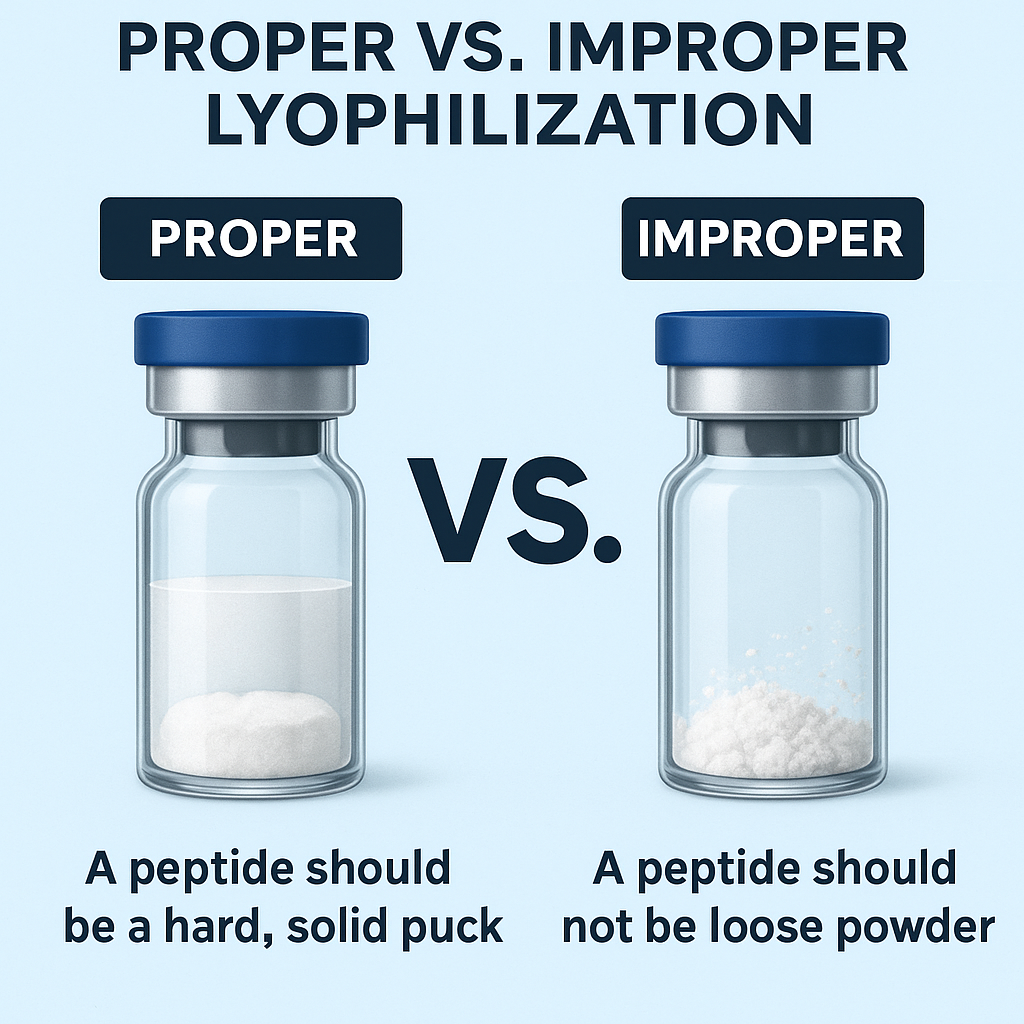
How to Identify a Properly Lyophilized Peptide
Beginner’s Guide to Understanding Peptide Appearance and Quality
🧬 What Does “Lyophilized” Mean?
Most peptides are preserved through a process called lyophilization, also known as freeze-drying.
In this process, the peptide solution is frozen and then placed under a vacuum so that the water inside it evaporates directly from ice to vapor (a process called sublimation).
The goal is to remove all moisture while keeping the peptide’s structure stable and intact. This creates a product that can be safely stored and reconstituted later with sterile water for research use.
🧊 What a Properly Lyophilized Peptide Should Look Like
A correctly lyophilized peptide should not look like a fluffy or loose powder.
Instead, it should appear as a solid mass — often described as a small, hard puck or disk — stuck to the bottom or side of the glass vial.
Here’s what to look for:
Texture: Hard, dense, and compact — not soft or powdery.
Location in the vial: Usually adhered to the bottom or slightly up the side.
Color: Most peptides are white to off-white; a light yellow or cream tint can also be normal depending on the amino acid composition.
Form: May look smooth or slightly uneven, but should be cohesive (one solid piece).
This “puck” shape forms naturally during freeze-drying when water is removed in a vacuum, leaving behind a solid peptide matrix.
🚚 Why the Puck Can Break During Shipping
It’s completely normal for a lyophilized peptide to arrive in smaller chunks or fragments rather than one perfect puck.
This happens because:
The solid peptide is brittle once dried.
Vibration and impact during shipping can cause it to crack or break.
Temperature and air pressure changes can also cause minor separation.
Even if it looks like several small pieces instead of one large puck, that does not mean the peptide is damaged or low quality — it’s still properly lyophilized.
⚠️ What a Poorly Lyophilized or Inferior Peptide Looks Like
If the contents of the vial appear as a fine, loose powder — similar to flour or dust — that’s a red flag.
A loose powder suggests:
The peptide was not fully freeze-dried, leaving moisture behind.
The manufacturer may have used improper lyophilization equipment or technique.
The peptide structure could be less stable or partially degraded.
In short:
✅ Solid puck = correctly lyophilized, stable peptide.
❌ Loose fine powder = improper manufacturing, possible instability.
🧪 Why Proper Lyophilization Matters
Proper lyophilization ensures:
Long shelf life and stability.
Consistent results when reconstituting for research.
Protection from degradation caused by moisture or heat.
Inferior lyophilization, on the other hand, can lead to:
Clumping or uneven mixing when adding solvent.
Degradation of the peptide sequence.
Reduced accuracy in research applications.
- It is imperative that you know the products that you purchase for your research whether it is from Southern Aminos or another company!
